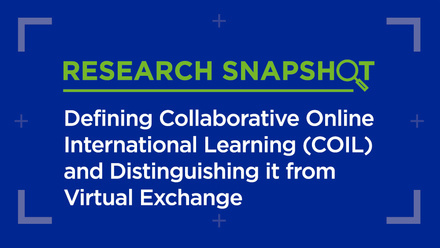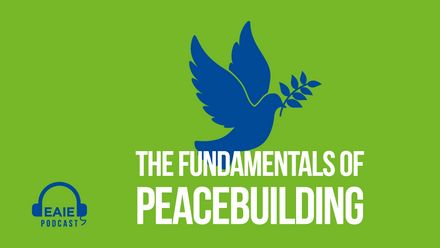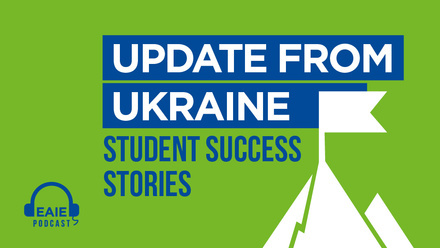Resilient teaching models: 3 decisions every university needs to make

In 2016, when Professor Flemming Konradsen of the University of Copenhagen published an Introduction to Public Health course on Coursera’s online learning platform, he didn’t design it for students at a liberal arts college in China. But the content he created turned out to be exactly what Duke Kunshan University (DKU) needed in February 2020. Located in China’s Wuhan province, DKU was one of the first universities to shift to a fully online format in response to the COVID-19 pandemic.
By combining Konradsen’s course with a global health course developed by Professor David Boyd at Duke University’s main campus, Matthew Rascoff, head of Duke’s Learning Innovation team, was able to build an online programme featuring world-class content in just three weeks. While the rushed process was less than ideal, this example illustrates the kind of global collaboration that’s possible in the modern era of higher education — and how the current health crisis is creating new reasons for institutions to work together.
The shift to digital
Educators on every continent are experimenting with online and blended learning, and we all have a chance to learn from each other. The potential benefits go far beyond delivering educational services during a crisis: universities have the opportunity to help their students develop cutting-edge, job-relevant skills for the most in-demand fields without having to recruit additional faculty or develop new courses. This flexibility is critical given the competitive job market and speed of change, particularly in technology.
New teaching models are being tested and refined all over the world, and the next big success stories in higher education could come from anywhere
For example, a modern MBA student may want to study data science and product management in addition to their core curriculum. Business schools that lack the capacity to teach these skills can leverage online courseware to offer these elective and specialisation courses either as part of a for-credit curriculum or as a stand-alone elective. In India, for example, universities are licensing online content as part of their regular curriculum, as a way for students to earn an honours degree with a specialisation, and as opportunities for multi-disciplinary learning by letting students across institutions take online courses on a non-credit basis in subjects outside their field of study. New teaching models are being tested and refined all over the world, and the next big success stories in higher education could come from anywhere.
As we move into the ’new normal’ phase of the pandemic, every university needs to make three key decisions:
1. How will you build resilience into your teaching models?
Blended learning is becoming the norm, and universities must be ready to switch to a fully online format at a moment’s notice. But resilient teaching is about more than just being able to shift to online delivery during a crisis. It’s about designing each course around a clearly defined set of learning goals. In resilient teaching, all learning activities, whether they happen in person or online, help students advance toward those goals.
It isn’t enough to adapt existing content for a digital format. In a learning experience that may include up to three modalities — in person, live online and on-demand — you need to plan to make the best use of each medium. Digital tools can do more than deliver content outside a classroom. They can help you engage students, assess their learning and support them during each stage of their learning journey.
2. What roles will your faculty members play in the new teaching models?
There are many possible models for how online and blended courses are developed and delivered. Sometimes a faculty member creates the instructional content and teaches the course. Sometimes a faculty member lectures and facilitates, using online content curated from a variety of sources. And sometimes an online course is designed to be delivered without an instructor.
As teaching models evolve, faculty members who embrace the changes will become even more valuable — although they may need to acquire some new skills. For each course, they should ask themselves how they can best serve their students. In some cases, they’ll do that by focusing less on traditional teaching and curriculum development activities. Instead, they’ll spend more time mentoring students, facilitating small group discussions and crafting assessments tailored to specific learning outcomes.
In building a course, a faculty member may choose to include existing online content developed by leading experts. When faculty members do create new instructional content, they will be able to focus on core areas of expertise. They may even decide to export their knowledge, as Flemming Konradsen did, by publishing an online course that can benefit students around the world.
3. What roles will your institution play in the global higher education market?
When the higher education industry emerges from the current period of intense disruption, the landscape will look radically different compared to 2019. The blended learning models being broadly adopted today will expand access to higher education and foster new forms of cooperation among universities.
Each institution will need to decide how it wants to participate in a worldwide community of higher education providers. You have the opportunity to rethink your market without geographic limitations. Consider how you might better serve your students by partnering with other institutions that have complementary strengths.
As teaching models evolve, faculty members who embrace the changes will become even more valuable
Technology plays a key role in the new era of blended learning and international partnerships. But just investing in digital learning technology isn’t enough. To position your institution for long-term success, you also need to adapt your teaching methods, empower your faculty in new ways, and redefine your mission and strategy within a connected global marketplace.
Developing resilient teaching models to cope with the shifting reality of our teaching and learning environment will be crucial for higher education as we navigate the next phase of the COVID-19 pandemic and the 'new normal' that gradually emerges from it.






